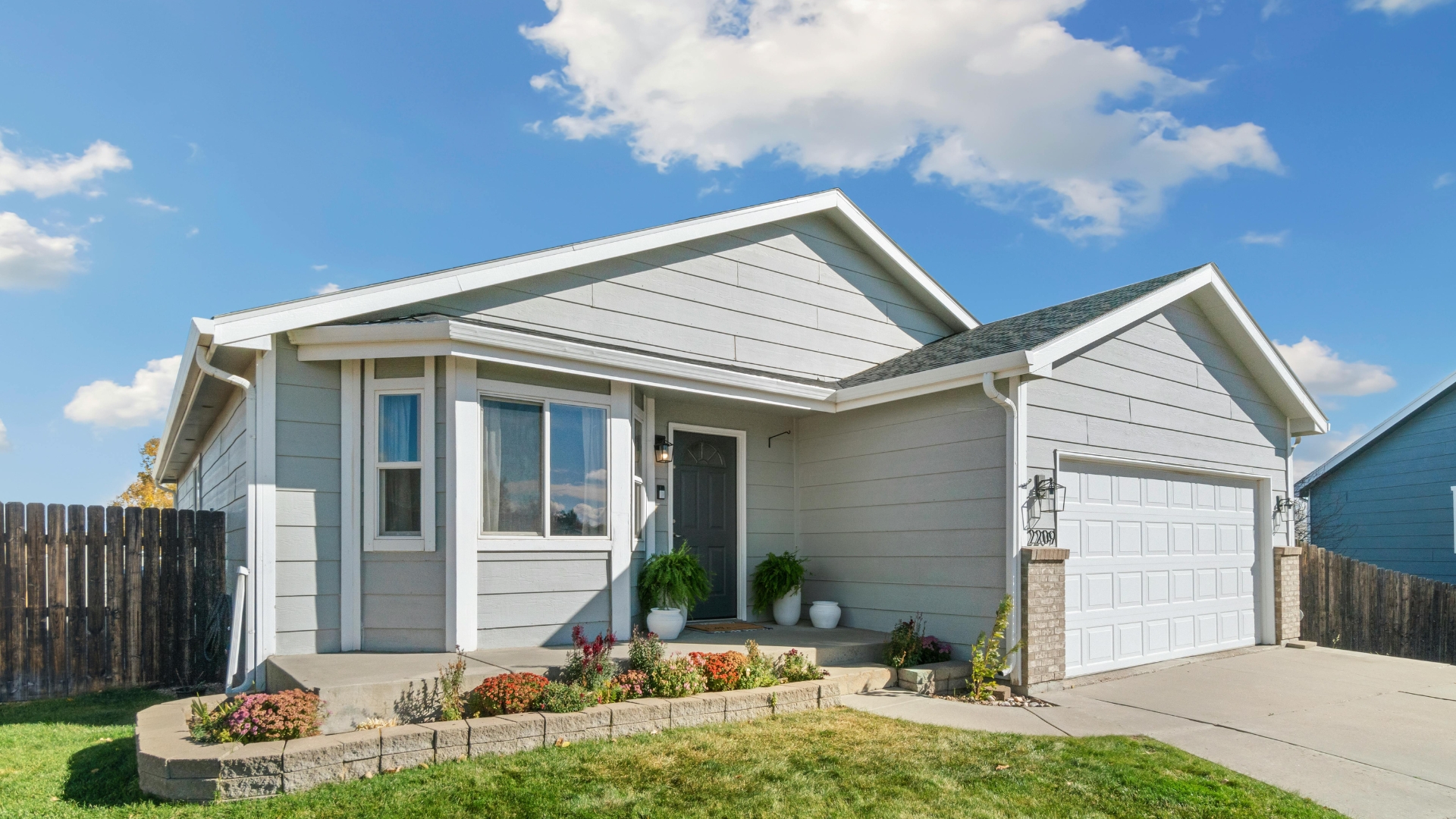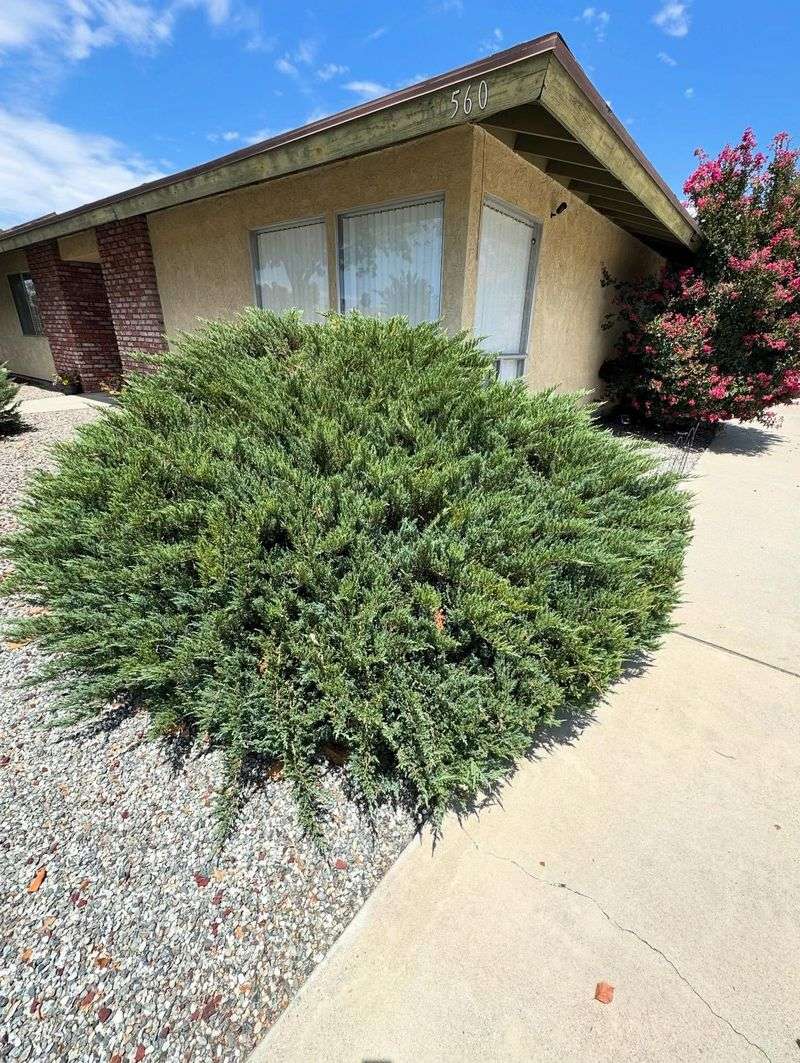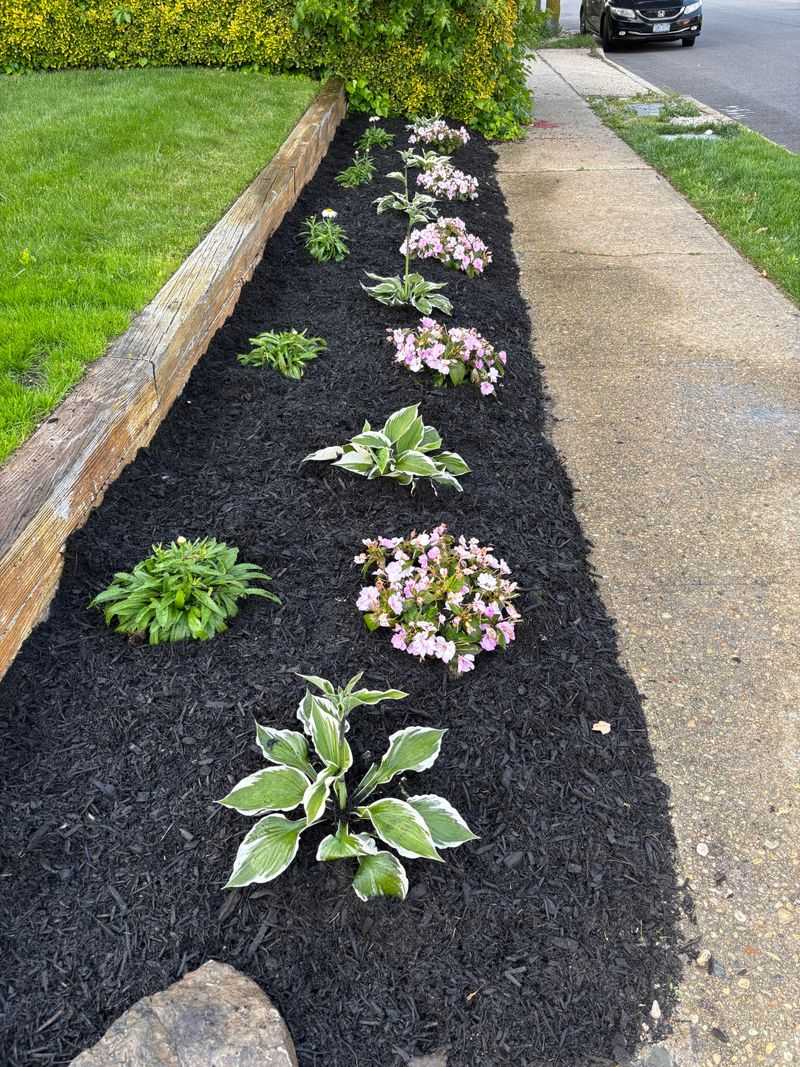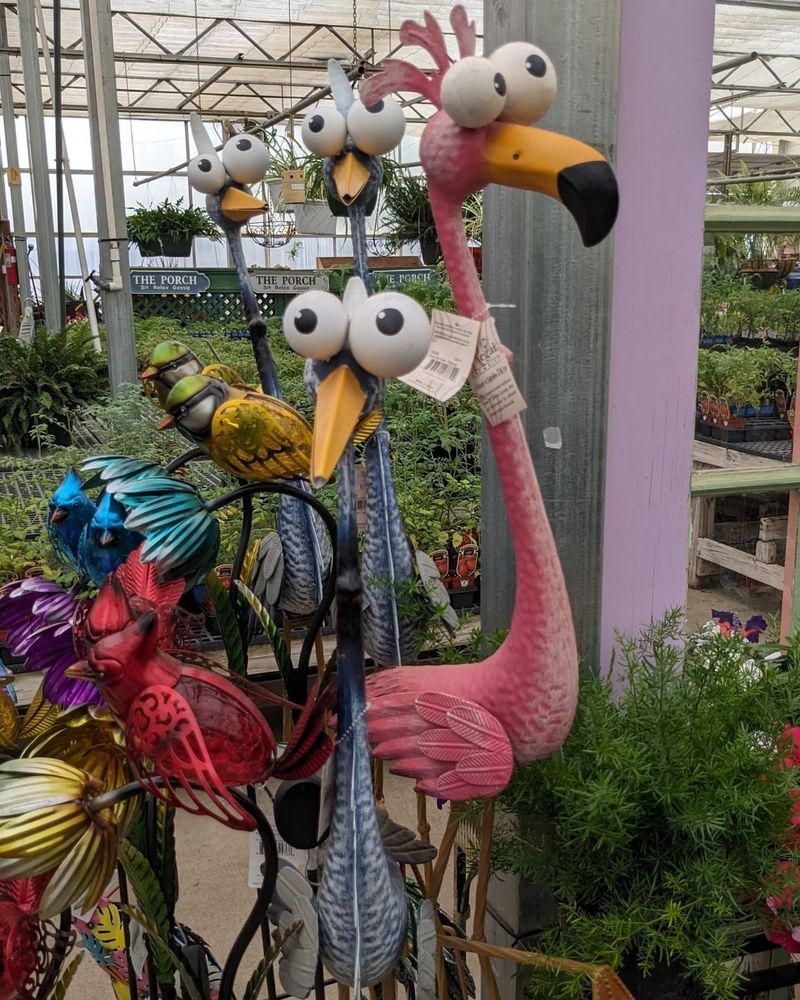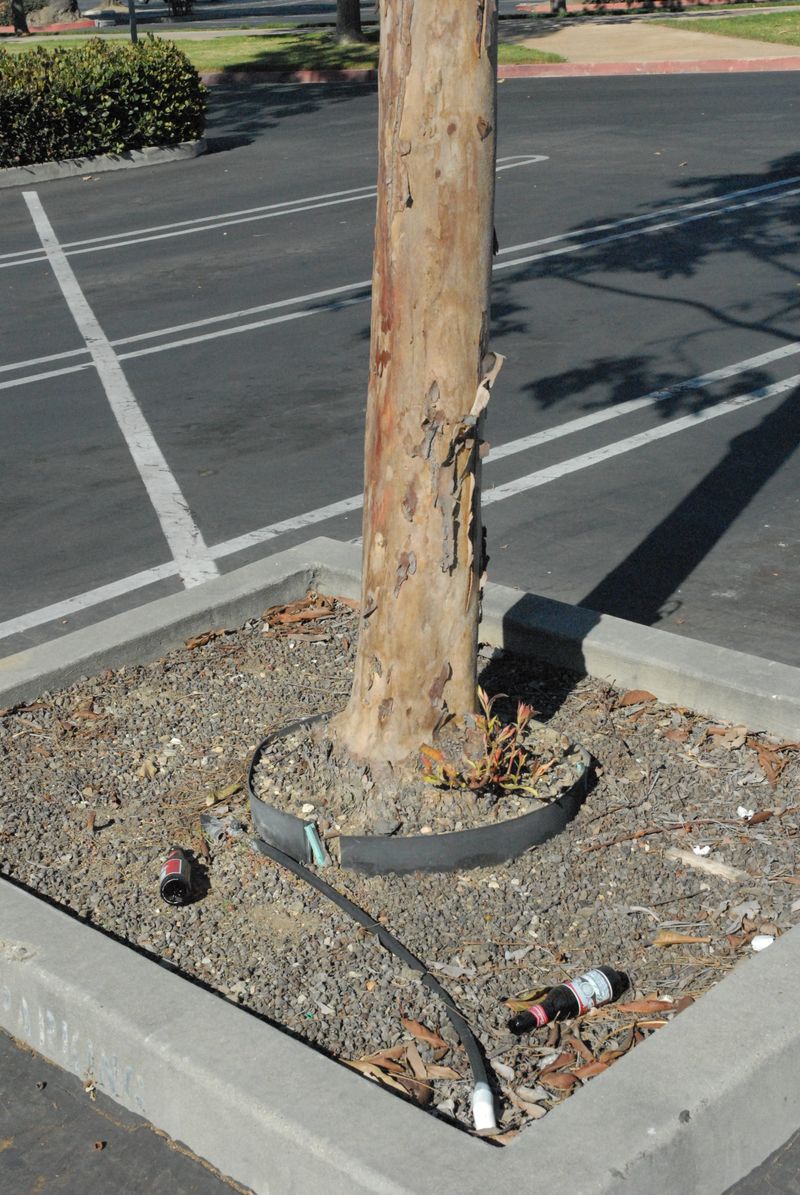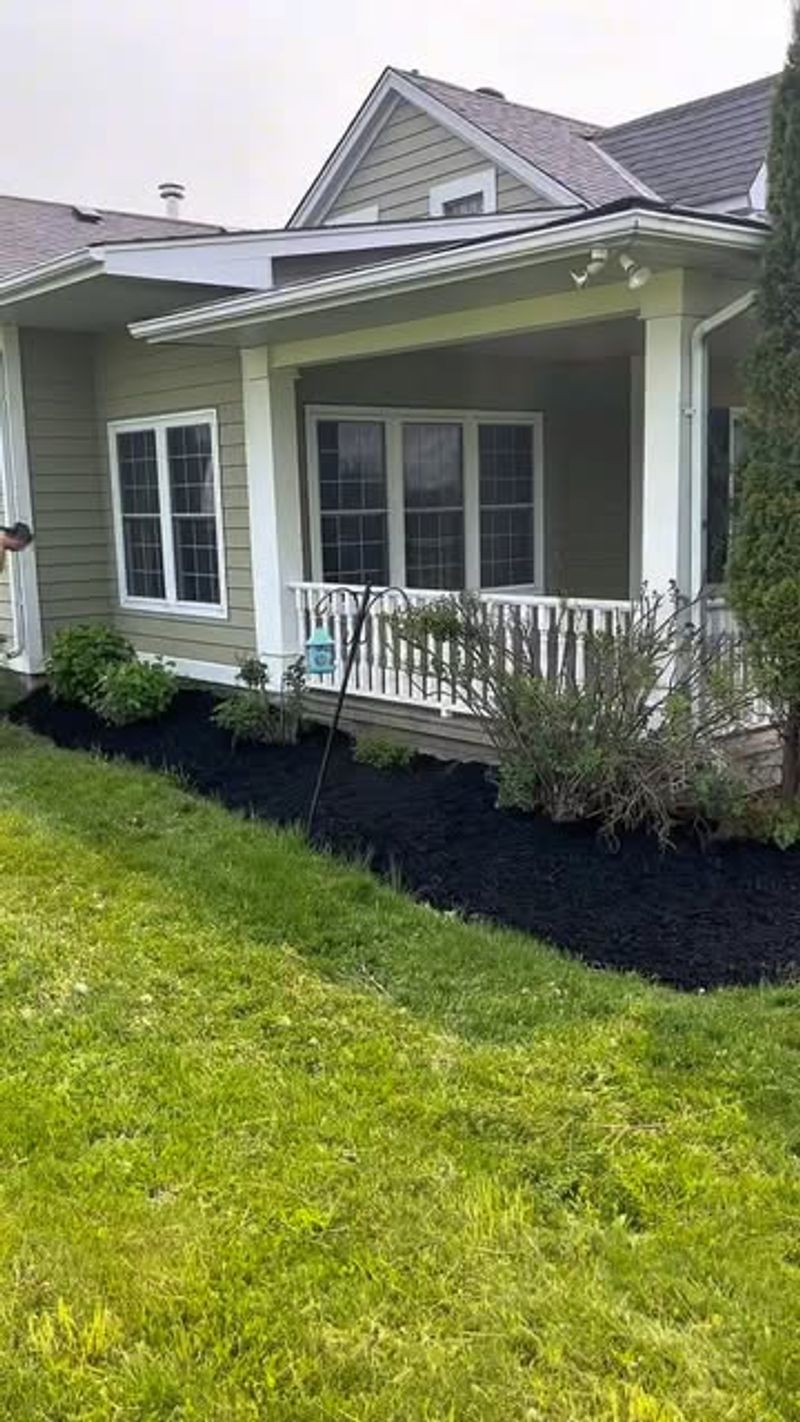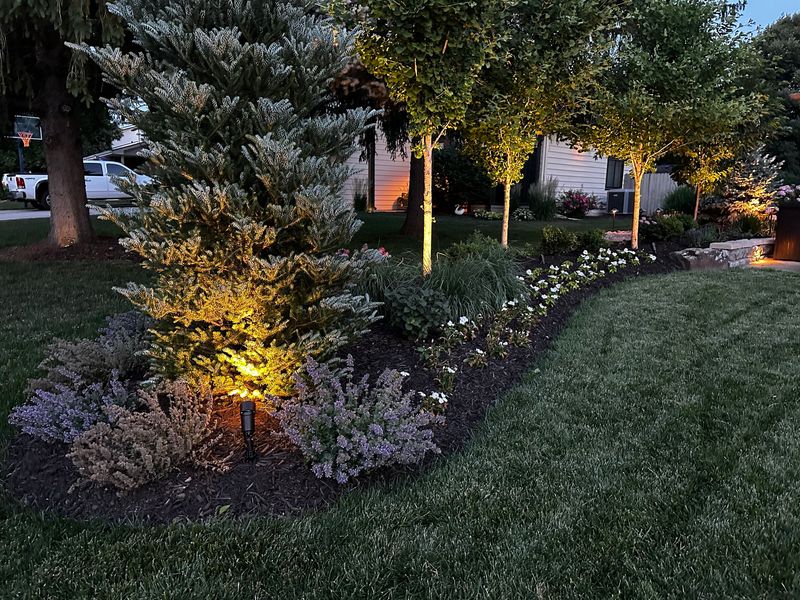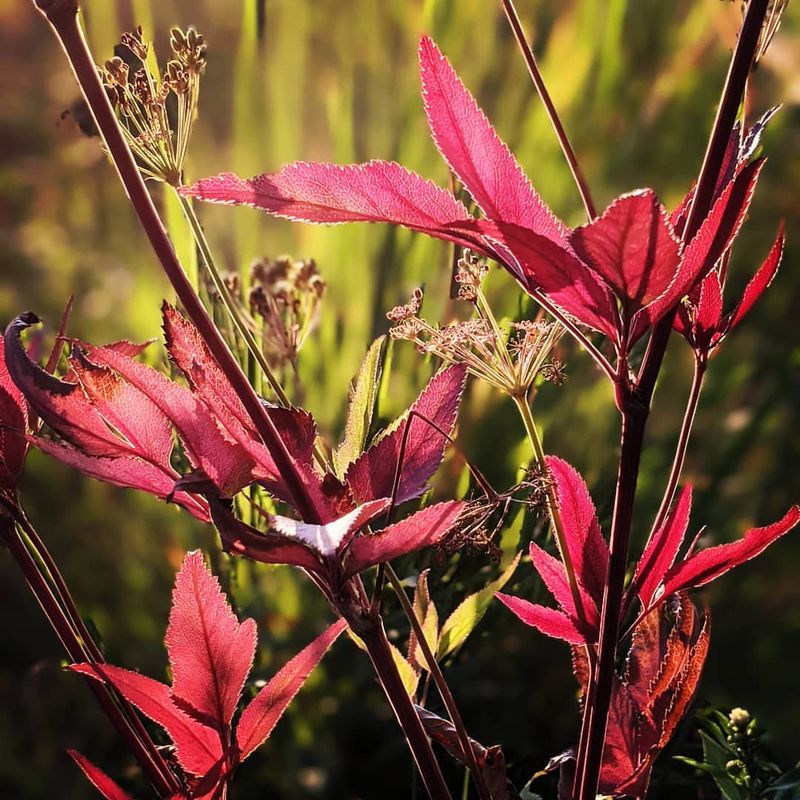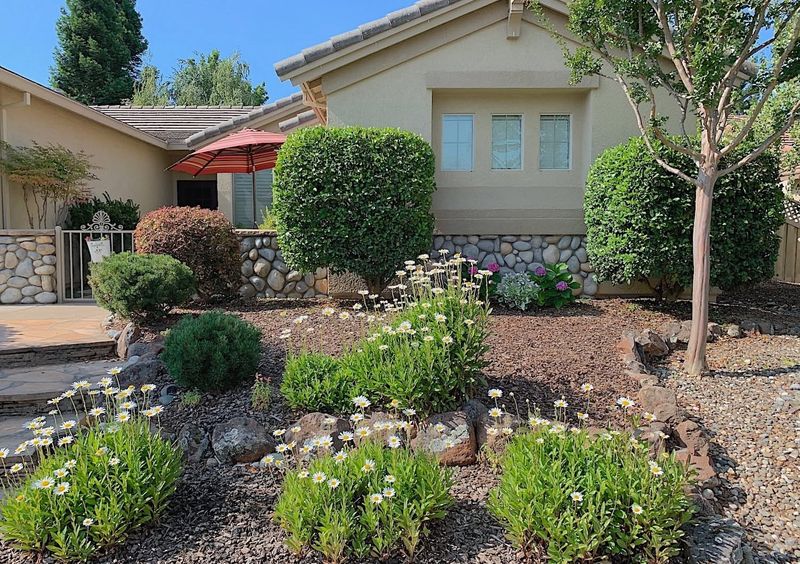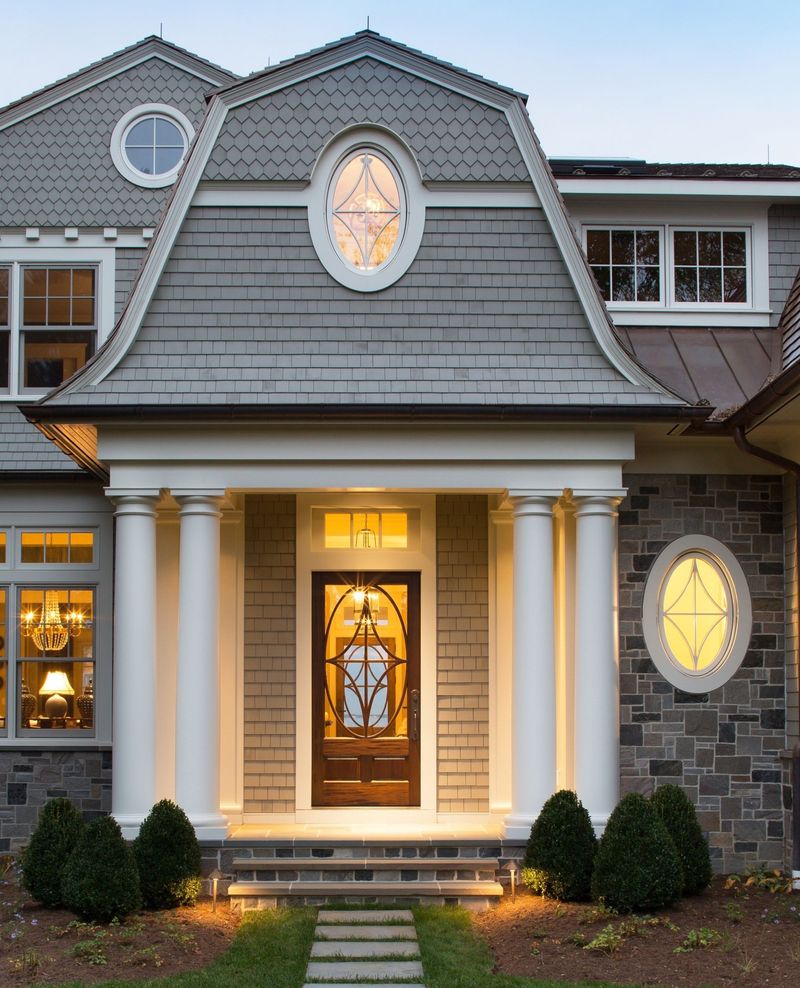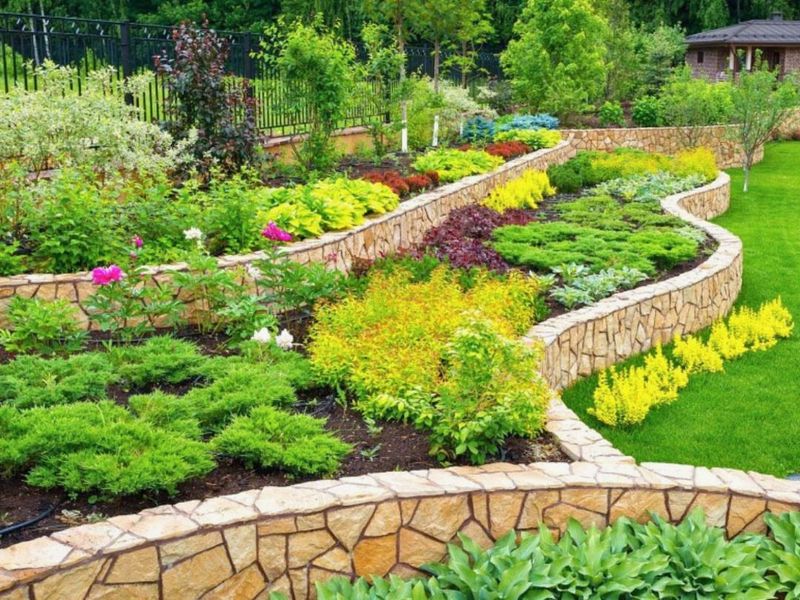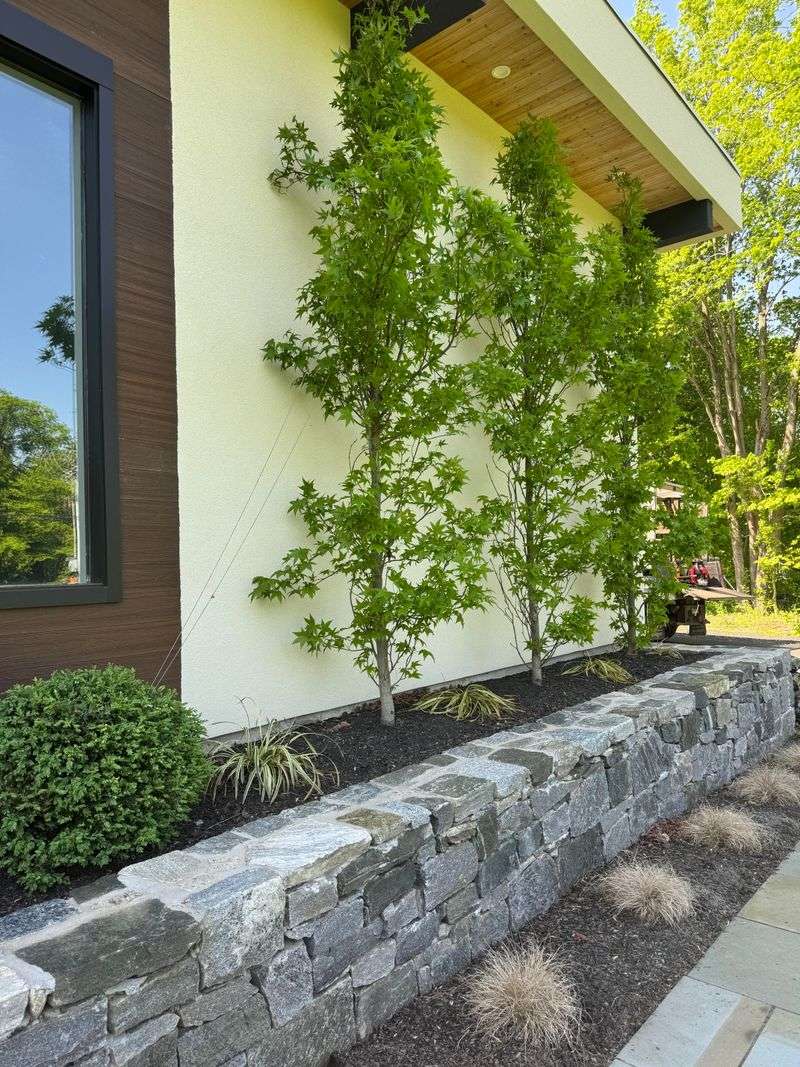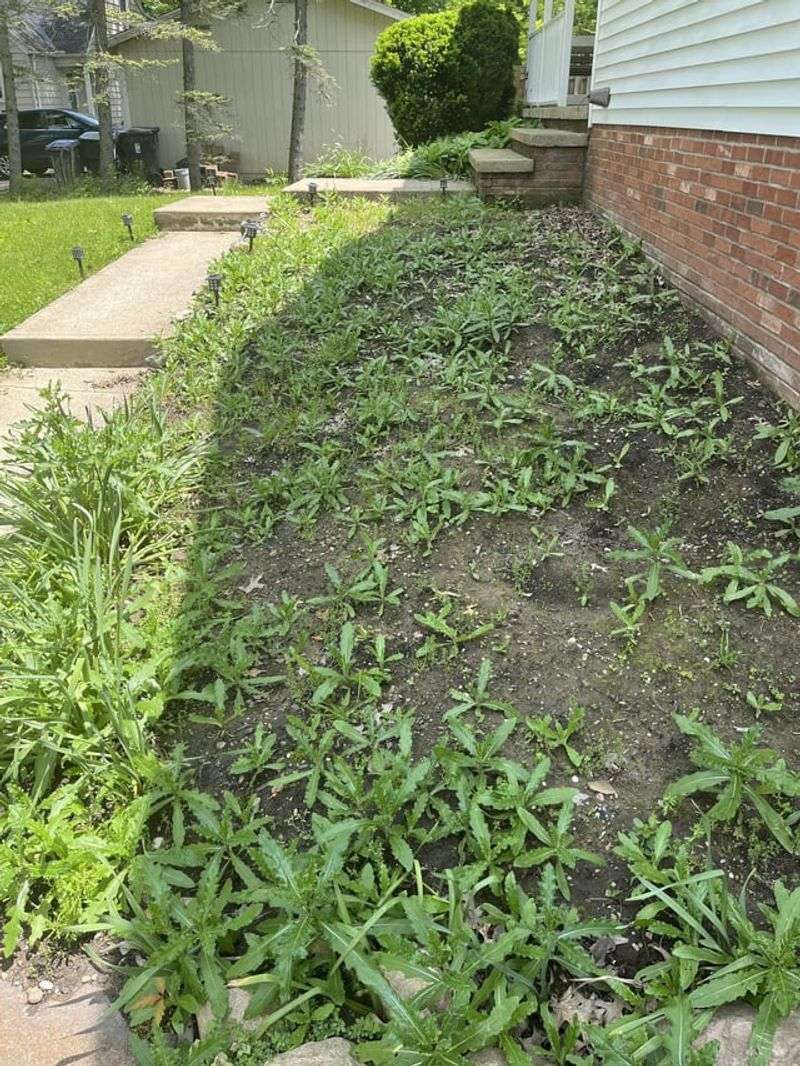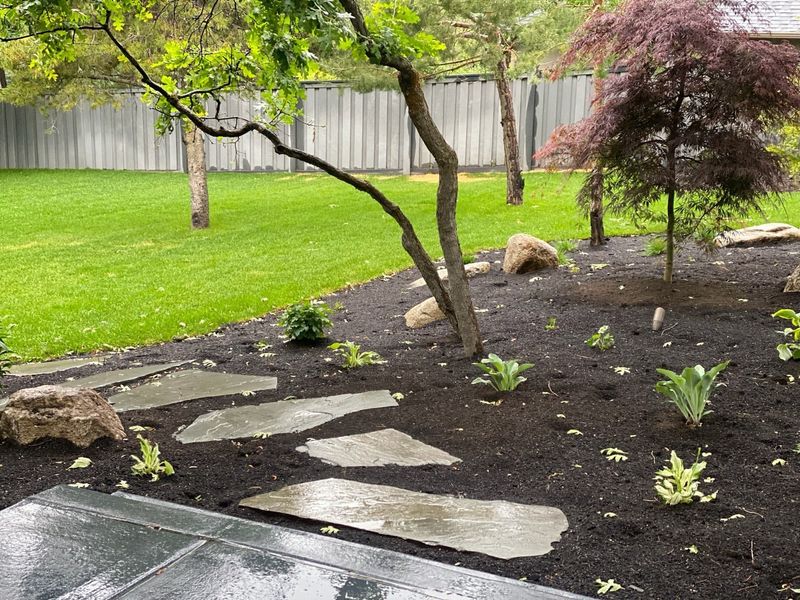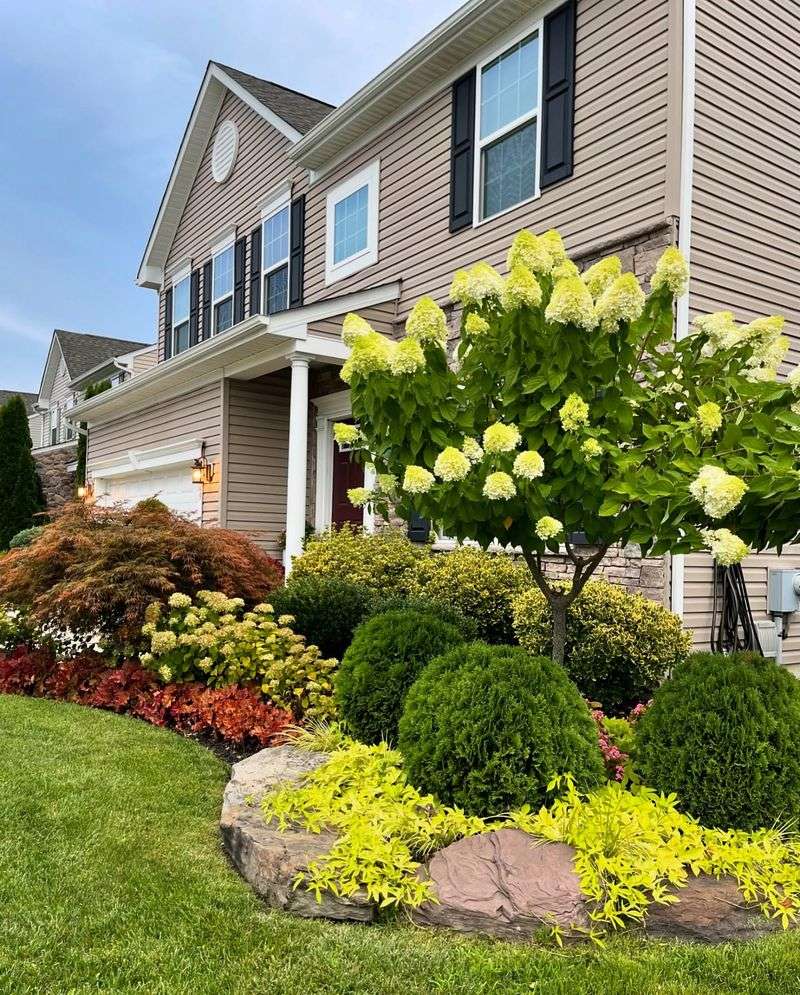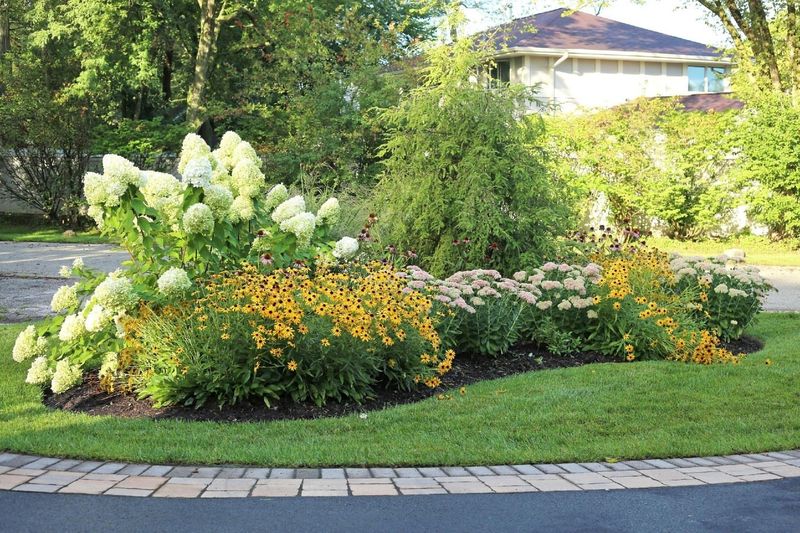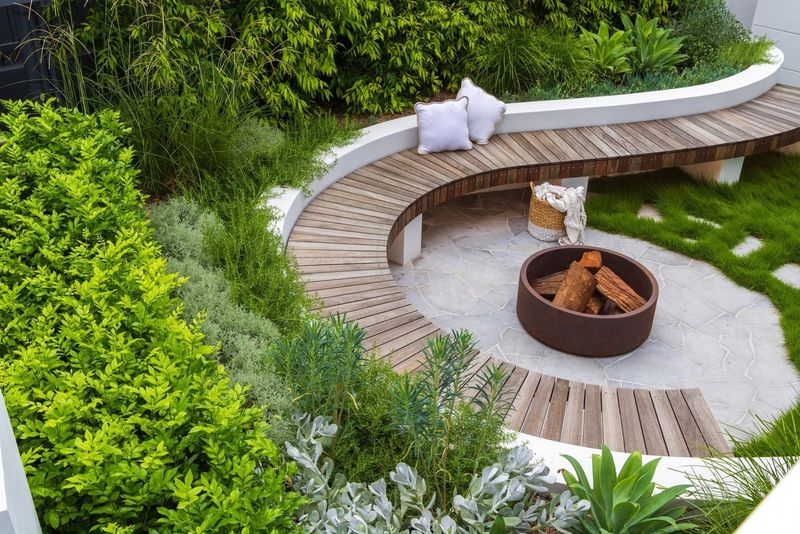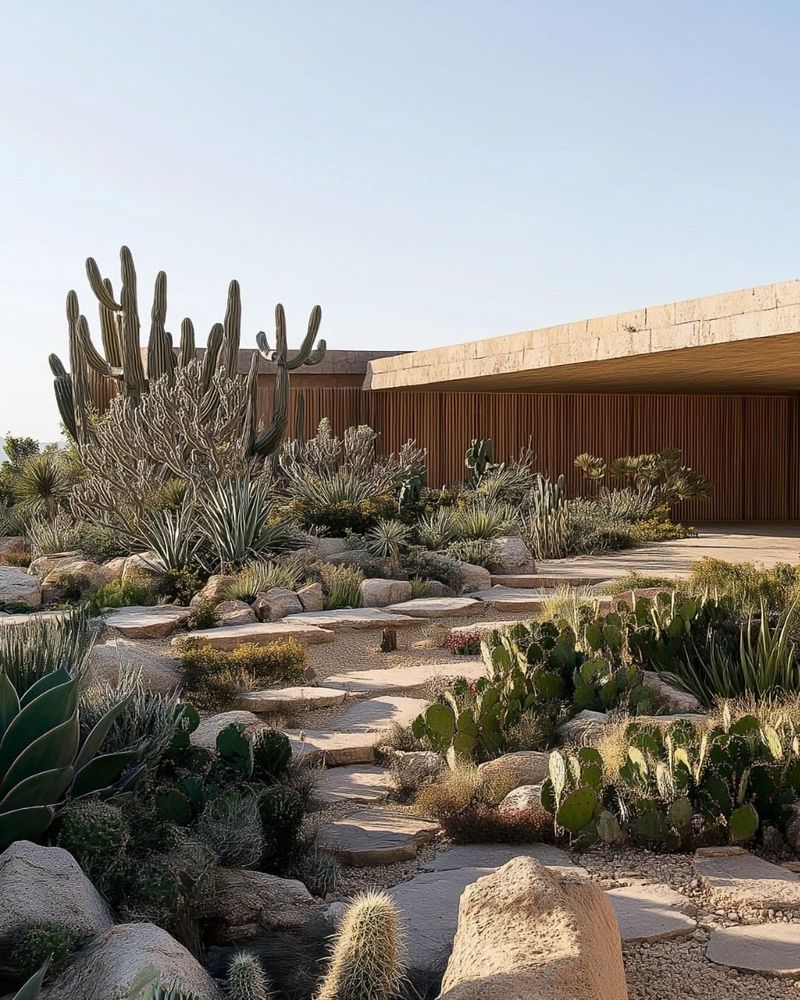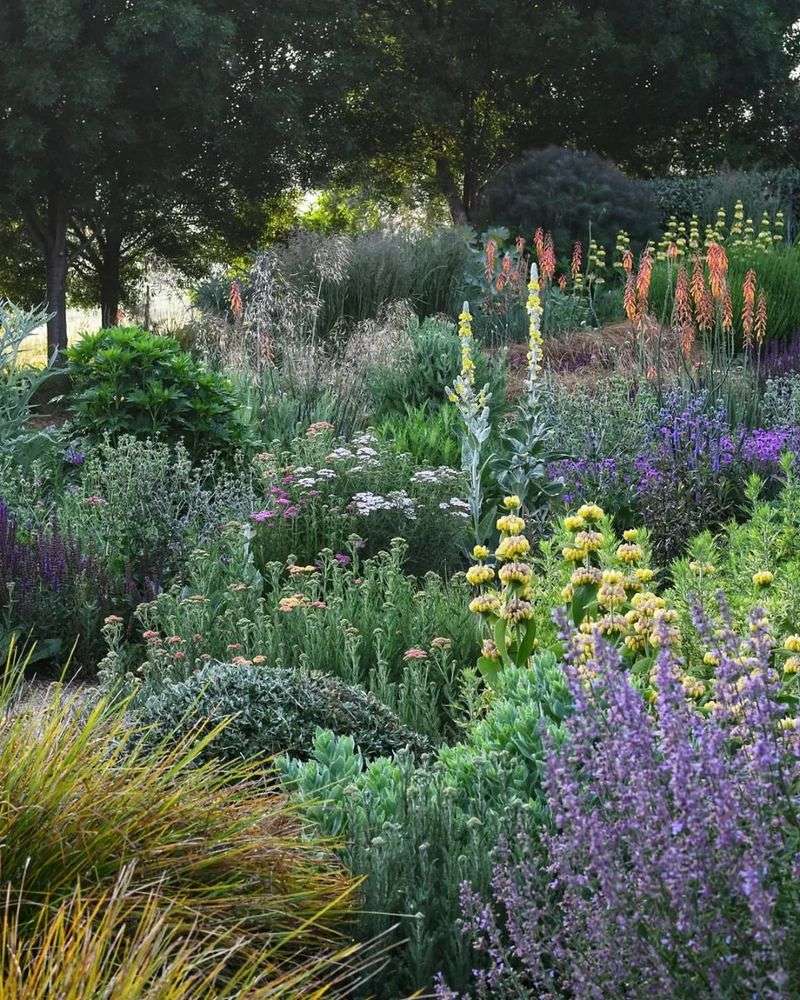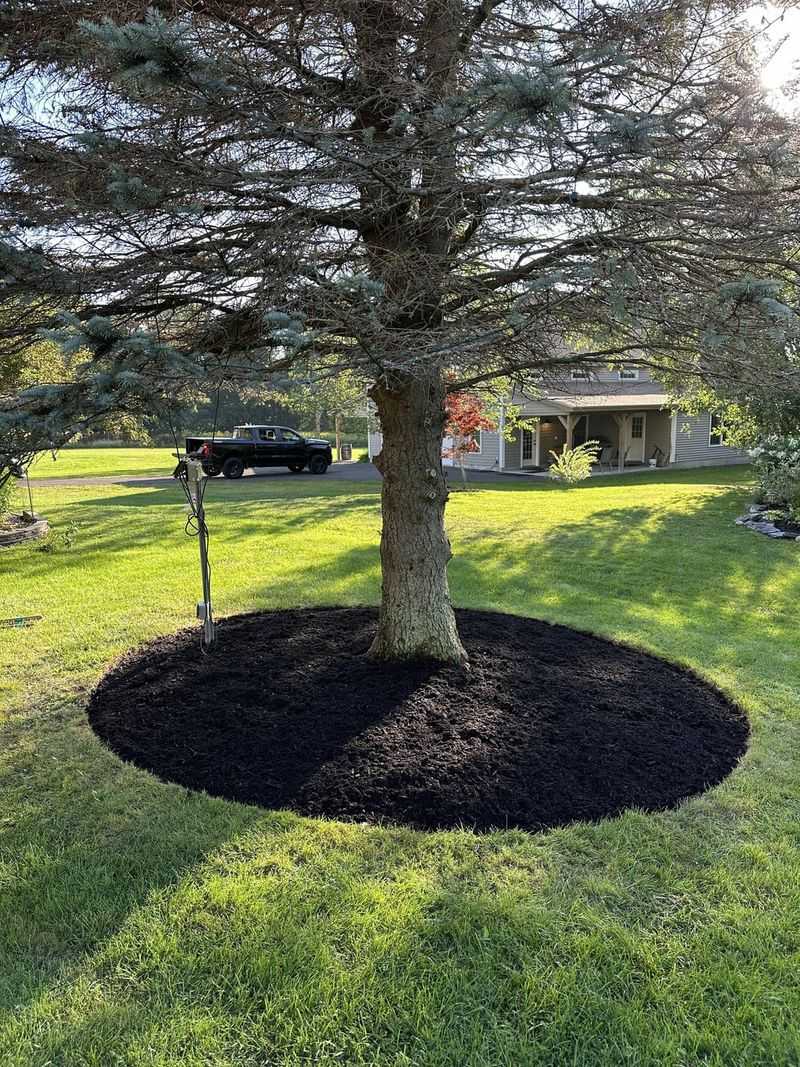A well-kept yard can instantly elevate your home’s appearance—but even the smallest landscaping missteps can do just the opposite. I’ve seen it time and again: great homes brought down by overgrown shrubs, awkward edging, or plant choices that just don’t fit.
The good news? Most of these mistakes are easy to spot—and even easier to fix. These 15 common landscaping slip-ups could be dragging your curb appeal down, along with 5 smart fixes that can turn your yard from “meh” to magazine-worthy.
1. Overgrown Bushes Blocking Windows
Massive shrubs engulfing your windows create a neglected, almost haunted house appearance. They block natural light from entering your home and can provide hiding spots for potential intruders.
Regular pruning keeps bushes at appropriate heights – typically below windowsills. Consider replacing overgrown varieties with dwarf or slow-growing alternatives that won’t require constant maintenance.
Your windows should frame your landscaping, not disappear behind it!
2. Mismatched Plant Varieties
Random collections of plants without a unified theme create visual chaos. The garden appears disorganized when tropical plants sit next to desert succulents or when flowering schedules don’t overlap.
Group plants with similar water, sun, and soil needs together. Choose varieties that complement each other in color, texture, and blooming seasons for year-round visual interest.
A cohesive plant palette makes your landscape look professionally designed rather than accidentally assembled.
3. Neglected Lawn Edges
Grass creeping onto walkways and driveways creates a messy, unkempt appearance. Those blurry boundaries between lawn and hardscaping elements instantly signal poor maintenance to anyone passing by.
Clean, defined edges make even simple landscapes look polished and well-maintained. Invest in a quality edging tool and create a regular edging schedule during growing season.
The contrast between crisp lawn lines and paved surfaces adds definition that elevates your entire front yard’s appearance.
4. Too Many Lawn Ornaments
Garden gnomes multiplying like rabbits? An army of flamingos taking over? Excessive decorations create visual clutter that distracts from your home’s architecture and plantings.
Select just one or two statement pieces that complement your home’s style. Quality trumps quantity when it comes to outdoor décor.
Strategic placement of a single beautiful sculpture or water feature creates a focal point that enhances rather than overwhelms your landscape design.
5. Improper Tree Placement
That cute sapling planted too close to your foundation will become a monster with invasive roots. Trees placed without considering mature size can damage structures, block views, and create maintenance nightmares.
Research mature heights and widths before planting. Small ornamental trees belong near houses (at least 8-10 feet away), while large shade trees should be planted 20+ feet from structures.
Proper placement ensures trees enhance your property without becoming expensive problems later.
6. Neglected Mulch Beds
Faded, scattered mulch with weeds poking through looks abandoned and messy. Fresh mulch instantly revitalizes planting beds while suppressing weeds and retaining soil moisture.
Apply 2-3 inches of quality mulch annually, keeping it pulled away from plant stems and tree trunks. Choose natural-looking colors that complement your home’s exterior.
The contrast between rich mulch and green plantings creates definition that makes your landscape pop from the street.
7. Poor Lighting Choices
Darkness swallowing your beautiful landscape after sunset wastes curb appeal potential. Alternatively, harsh floodlights create an unwelcoming prison-yard effect that does your home no favors.
Layer lighting with path lights, uplights on trees, and subtle accent lighting on architectural features. Solar options make installation easy without electrical expertise.
Strategic lighting extends your curb appeal into evening hours while improving safety and security.
8. Ignoring Seasonal Interest
Gardens that only shine for a few weeks leave your landscape looking barren most of the year. Relying solely on spring flowers creates a one-hit-wonder effect.
Include plants with varied blooming schedules alongside those with colorful fall foliage, winter berries, or interesting bark. Evergreens provide structure year-round when deciduous plants go dormant.
A thoughtfully planned four-season landscape ensures your curb appeal never takes a vacation, even in winter months.
9. Scattered Plantings Without Grouping
One plant here, another there – this polka-dot approach creates visual confusion. Scattered individual plants fail to make visual impact and appear random rather than intentional.
Group identical plants in clusters of odd numbers (3, 5, 7) to create bold visual statements. Mass plantings read as purposeful design elements rather than afterthoughts.
These plant groupings create rhythm and flow that guide the eye across your landscape in a pleasing manner.
10. Overlooking Front Door Focal Point
Neglecting the entryway area wastes prime curb appeal real estate. Your front door should be the star of the show, not lost in landscaping confusion.
Create a welcoming entrance with container gardens flanking the door, a defined walkway, and plants that frame rather than hide the entry. Consider a bold door color that complements your home’s exterior.
This entrance focal point draws visitors in while creating a sense of arrival that enhances your entire property.
11. Forgetting About Hardscaping
Focusing exclusively on plants while ignoring structural elements creates an unbalanced landscape. Without hardscaping, even beautiful plantings can look messy and undefined.
Incorporate elements like stone borders, decorative retaining walls, or defined pathways to create structure. These permanent features provide year-round visual interest even when plants aren’t at their peak.
The contrast between soft plantings and hard materials creates depth that elevates your landscape design.
12. Planting Without Scale Consideration
Tiny plants lost against a massive house or giant varieties overwhelming a small space create awkward proportions. Scale mismatches make even healthy landscapes look oddly imbalanced.
Choose plants proportional to your home’s size. Larger houses need substantial plantings while smaller homes pair better with more delicate varieties.
Proper scaling creates harmony between your home’s architecture and its surrounding landscape, making both look their absolute best.
13. Neglecting Weed Control
Dandelions popping through pavers and crabgrass invading flower beds signal neglect faster than almost any other landscape issue. Even expensive plantings look shabby when surrounded by weeds.
Establish a regular weeding schedule and use quality landscape fabric under mulch in planting beds. Pre-emergent herbicides applied at the right time prevent weed seeds from germinating.
Weed-free spaces instantly look more intentional and well-maintained, even with simple plantings.
14. Improper Lawn Care Practices
Scalping grass too short or watering incorrectly leads to patchy, brown lawns that detract from even the best landscaping. Mowing patterns that change weekly create an inconsistent appearance.
Maintain proper mowing height (typically 2.5-3.5 inches) and water deeply but infrequently to encourage deep root growth. Consistent mowing patterns create that professional striped look that elevates your entire property.
A lush, healthy lawn provides the perfect green canvas for showcasing your other landscape elements.
15. Ignoring House-Plant Color Coordination
Clashing colors between your home’s exterior and landscape plantings create visual discord. Red flowers against a red brick house disappear, while conflicting color schemes fight for attention.
Choose plant colors that either complement or pleasantly contrast with your home’s exterior. Blues and purples pop against yellow houses, while warm-toned homes benefit from cool-colored plantings.
This thoughtful color coordination creates a cohesive look that appears intentionally designed rather than randomly planted.
16. Smart Fix: Defined Planting Beds with Curves
Straight, boxy planting areas look rigid and uninspiring. Curved beds with flowing lines instantly add elegance and visual interest to any landscape.
Use a garden hose to lay out graceful curves before cutting edges. Gentle sweeping shapes that mimic natural landforms create a more organic, professional appearance than straight lines and sharp corners.
These curved planting areas soften hardscapes while creating a sense of movement that draws the eye through your landscape design.
17. Smart Fix: Vertical Element Integration
Flat landscapes lack dimension and visual interest. Adding height variation through vertical elements creates instant drama and sophistication.
Incorporate trellises, arbors, tall ornamental grasses, or small flowering trees as vertical accents. These elements draw the eye upward, creating a multi-dimensional landscape that feels more complete.
Strategic placement of these vertical features frames views, creates garden rooms, and adds architectural interest that flat plantings alone cannot achieve.
18. Smart Fix: Water-Wise Plant Groupings
Mixing high-water plants with drought-tolerant varieties creates maintenance headaches and patchy results. Some plants look perpetually thirsty while others rot from excess moisture.
Group plants with similar water requirements together in hydrozones. This smart approach allows efficient irrigation while ensuring all plants thrive under optimal conditions.
Beyond looking better, these thoughtful groupings save water, reduce maintenance time, and create more resilient landscapes that weather drought conditions beautifully.
19. Smart Fix: Layered Planting Design
One-dimensional landscapes with plants all the same height create a flat, uninteresting appearance. Professional landscapes utilize the principle of layering to create depth and visual interest.
Position taller plants toward the back of beds (or center of island beds), medium-height plants in the middle, and low-growing varieties at edges. This theater-seating approach ensures all plants remain visible.
Layered designs appear fuller while showcasing each plant’s unique characteristics from multiple viewing angles.
20. Smart Fix: Mulch Ring Technique
Grass growing right up to tree trunks not only looks messy but damages trees through mower injuries and root competition. Those tiny circles of mulch most homeowners create aren’t nearly sufficient.
Create generous mulch rings extending to the tree’s drip line (outer edge of branches). This technique eliminates mowing around trunks while creating defined landscape features from existing trees.
Expanded mulch rings transform scattered trees into intentional landscape elements while improving tree health and reducing maintenance.

